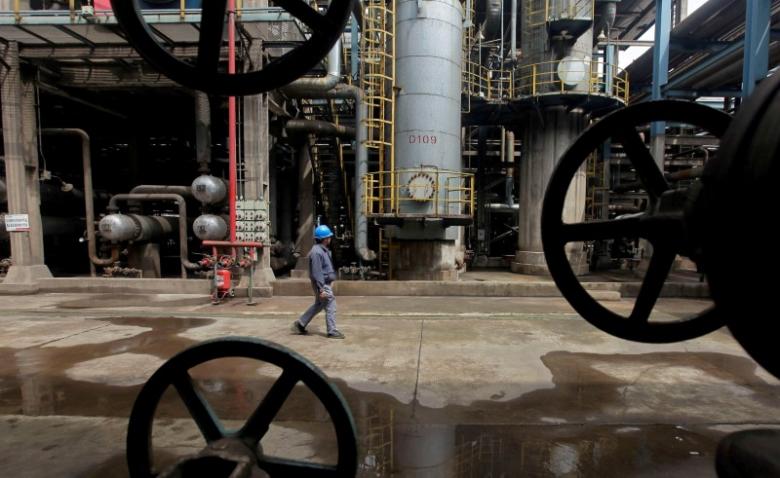Oil prices fall on higher OPEC output, rise in US crude stocks
Oil prices fell on Thursday after OPEC said that its production had risen to its highest level in at least eight years and following reports of an increase in US crude stockpiles.
International Brent crude oil futures LCOc1 were trading at $51.52 per barrel at 0103 GMT, down 29 cents, or 0.6 percent, from their previous close.
US West Texas Intermediate (WTI) crude futures were down 35 cents, or 0.7 percent, at $49.83 per barrel.
Traders said oil markets had come under pressure after Organization of the Petroleum Exporting Countries (OPEC) reported a rise in production, despite the producer cartel having plans, potentially with non-OPEC producer Russia, to cut output in a bid to rein in a global supply overhang.
"Crude responded predictably, with both Brent and WTI falling," said Jeffrey Halley, senior market analyst at brokerage OANDA in Singapore.
OPEC on Wednesday reported its oil production rose in September to the highest in at least eight years and raised its forecast for 2017 non-OPEC supply growth, pointing to a larger surplus next year despite the group's deal to cut output.
The producer cartel pumped 33.39 million barrels per day (bpd) last month, according to figures OPEC collects from secondary sources, up 220,000 bpd from August.
"In the absence of any OPEC-Russia headlines to give crude its daily adrenaline shot, the market looks nervously to the EIA Crude Inventory figures due in the US this evening," Halley added.
The US Energy Information Administration (EIA) is due to publish official storage inventory data later on Thursday.
The American Petroleum Institute, a trade group, reported on Wednesday that US crude inventories rose by 2.7 million barrels to 470.9 million barrels in the week to Oct. 7. This would be the first rise in oil stocks following five straight weeks of declines.
Traders said a strong dollar, which was hovering near seven-month highs on Thursday .DXY on reinforced prospects for a near-term US interest rate hike, was also wighing on crude futures.
A stronger dollar makes it more expensive for countries who use other currencies domestically to import dollar-traded oil, potentially weighing on demand.






